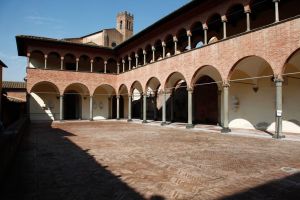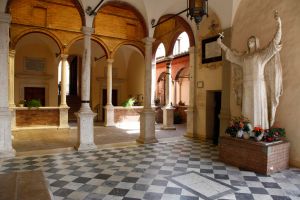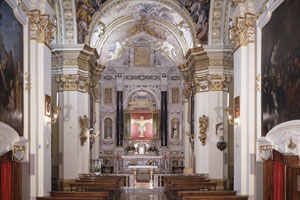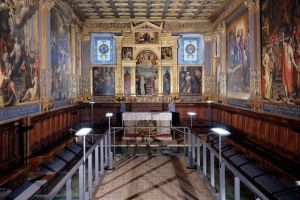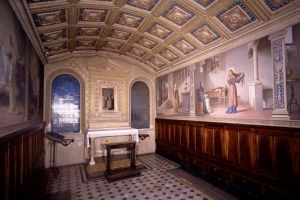The Shrine of the House of Saint Catherine
Introduction
Why is the place considered most representative of Saint Catherine her house, and not a convent? The answer lies in the fact that Catherine belonged to the Third Order of Saint Dominic. After taking the habit of a tertiary (called mantellata in Italian, 'cloaked', because she wore a cloak as part of her habit), Catherine continued to live in her family’s house, in keeping with the new way of living in consecration to God first introduced by Saint Francis and then adopted by Saint Dominic.
The institution of the Third Order was a response to the vocation of the many lay faithful, men and women, who wanted to pursue an intense Christian life inspired by the spirituality of the founders without living in a convent like the friars. Belonging to the Third Order offered the possibility of living the faith in the world. From the thirteenth century onwards, this proposal of ‘lay holiness’ captured a great number of adherents, thanks to the force of the message it contained: in every condition of life lies the opportunity to live the Gospel, and the call to holiness is not reserved for some, but is universal.
The story of Saint Catherine is an emblematic example: the fact of living her life inside the walls of her home and on the streets of the city rather than in a convent, and of being a lay sister rather than a nun, did not keep her from entering into deep communion with God . . .
